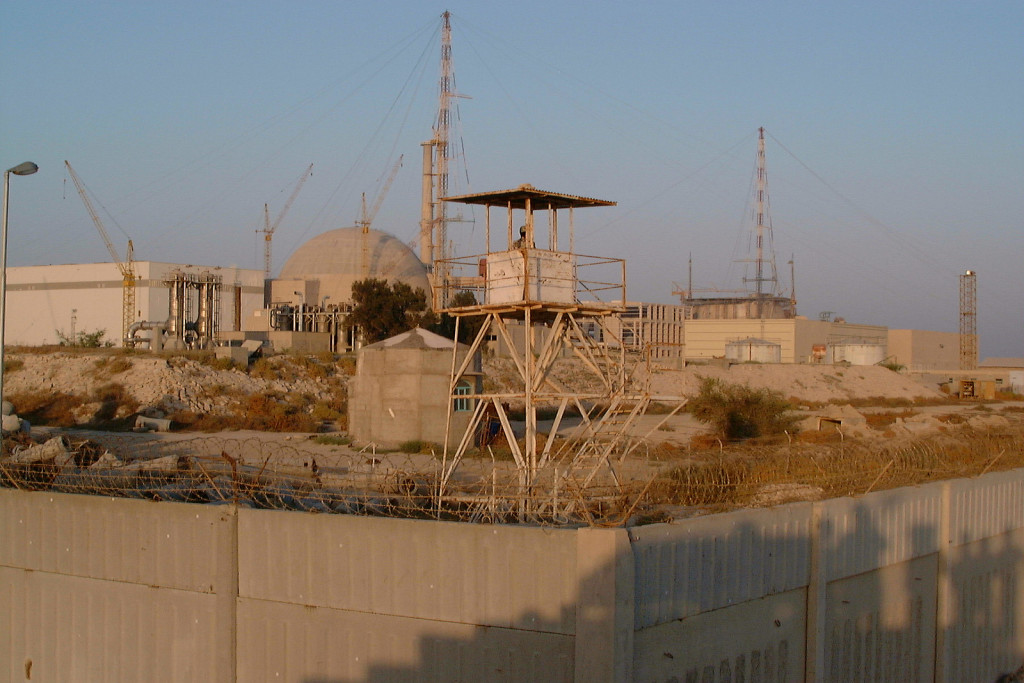Misreading Khamenei’s Nuclear Role

Ayatollah Ali Khamenei has played his cards right. As the June 30 deadline for a comprehensive nuclear accord approaches, Iran’s supreme leader has maintained his rhetoric of resistance, dismissing long-term limits on Iran’s nuclear program as “a lifetime.” While certain Washington analysts — including on this forum — dismiss his statements as mere bravado and concerns about them as “overblown,” Khamenei’s role in Iran’s nuclear diplomacy must not be minimized. Rather, the principles laid down by the supreme leader remain the best barometer for assessing Iran’s negotiating behavior.
In Sept. 2013, shortly after Hassan Rouhani’s election as president, Khamenei gave a speech authorizing nuclear diplomacy based on the principle of “heroic flexibility.” That flexibility, however, represented a shift in tactics rather than strategy. To date, the negotiations have earned Iran sanctions relief and a diminished threat of a preemptive military strike while allowing it to continue advancing its nuclear program through ongoing low-level enrichment and nuclear-related research and development — all without altering Tehran’s fundamental objectives.
Twice during the interim nuclear deal’s implementation period in 2014, Khamenei added to Iran’s negotiating leverage by declaring new red lines that Iran would not cross. Emboldened by past Western concessions (abandoning the long-held demand for zero enrichment, for example), Tehran released two infographics distilling those directives lest it remained unclear. These included retaining the Fordow enrichment facility, and limiting the talks to the nuclear issue (rather than Tehran’s human rights record or regional behavior). Since then, Khamenei’s negotiators have remained loyal to those directives, and wrung concessions from international negotiators that allowed the principles enshrined in those red lines to be met.
Khamenei tends to clearly lay out Iran’s positions, and then goes about creating the propitious conditions to achieve them. In 2013, he said: “I’m not a diplomat. I’m a revolutionary. I speak clearly and honestly.” The following year, he claimed Iran should have a total enrichment capability of 190,000 Separative Work Units (SWU), which is equivalent to just under 190,000 first-generation centrifuges. A cursory look at the April 2015 framework for a final deal might appear as if Khamenei backed down on his red line, since it only allows Iran to enrich with 5,060 IR-1 centrifuges for a period of 10 years. Should the framework guide negotiators towards a final deal, in 10 years’ time Khamenei will not only have the capacity to move towards 190,000 SWU, but Iran would have been legally experimenting with advanced centrifuges for a decade. This would enable it to develop machines several times more efficient than the IR-1, with no barrier to their installation and use. Thus, Khamenei not only retained his redline of 190,000 SWU, which was never time-sensitive, but was able to retain another red line: “continuing nuclear research and development.”
But it gets better. By entrapping negotiators into thinking that his demand for 190,000 SWU was immediate, Khamenei intentionally overvalued the IR-1, making it appear that he was forced to settle on pursuing enrichment in only 5,060 of them at Natanz. The real prize, that which can greatly increase Iran’s SWU capacity, is research and development on advanced centrifuges (like the IR-2m, for example), which incidentally, pursuant to further agreement, the deal will permit. In attempts to negotiate Iran down, the P5+1 has actually shifted its “bottom line.” The P5+1 did reportedly change its stance on centrifuges numerous times, raising its cap “of 500 centrifuges … to 1,500 and then 4,000.” Still, this approach is the opposite of the “hardline opening position” recommended by those who claim Khamenei’s influence in the talks is marginal.
Another Khamenei red line that the deal upholds is keeping the Fordow facility open. Since its discovery in 2009, the fortified underground enrichment plant has been a key concern for American and European officials. The negotiators’ consensus position of “stop, shut, ship” required Iran to unambiguously close the facility. Fast-forward to the framework, however, and Fordow is allowed to remain open so long as enrichment of fissile material does not occur there for 15 years. To Iranian officials, however, Fordow is an asset prized for its “invulnerability,” an allusion to it being impervious to attack, not its output or capacity. Advantage, Khamenei.
[widgets_on_pages id=3]
Khamenei’s centrality to the nuclear debate was recently reinforced by his statements forbidding the inspection of military facilities and prohibiting the interviewing of nuclear scientists. Shortly thereafter, Iranian elites flooded the airwaves. Clerics, parliamentarians, the foreign minister, and numerous military officials (including from the Islamic Revolutionary Guard Corps [IRGC]) came out supporting the leader’s declaration. Deputy IRGC Commander Hossein Salami even went so far as to claim Iran’s response to such requests would be to offer up “hot lead.”
Such statements are not an attempt to ride Khamenei’s coattails to stardom. Rather, they indicate the supreme leader’s ability to whip the Islamic Republic’s elite in line behind a position.
Khamenei’s more recent incendiary utterances implicitly relate to the ratification of the IAEA’s Additional Protocol — a binding set of regulations governing enhanced inspections to which over half of UN member states have agreed. Iranian negotiators will likely continue claiming that the Protocol only calls for “’managed access’ to nuclear installations,” rather than “anytime, anywhere” inspections. There is also the challenge of recently passed Iranian legislation legally barring the IAEA from inspecting “military [and] security facilities.” All of this falls far short of the verifiability inspectors require, but it fits neatly within the bounds of Khamenei’s red lines.
Despite the dynamic debate in Washington over who really rules Iran, “Supreme Leader” is a title meant to be taken literally. While Khamenei must balance Iran’s fractious factions and competing political forces, he remains the ultimate decision-maker on issues affecting Tehran’s strategic orientation, foreign policy, and — yes — its nuclear program.
Behnam Ben Taleblu is an Iran Research Analyst Foundation for Defense of Democracies (FDD). Follow @FDD_Iran on Twitter.
Photo credit: Paolo Contri / IAEA

